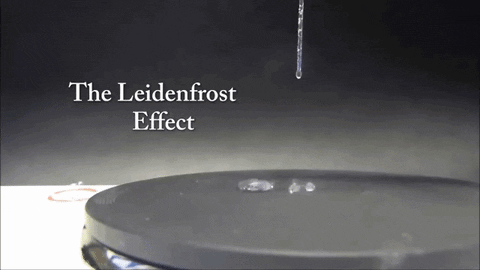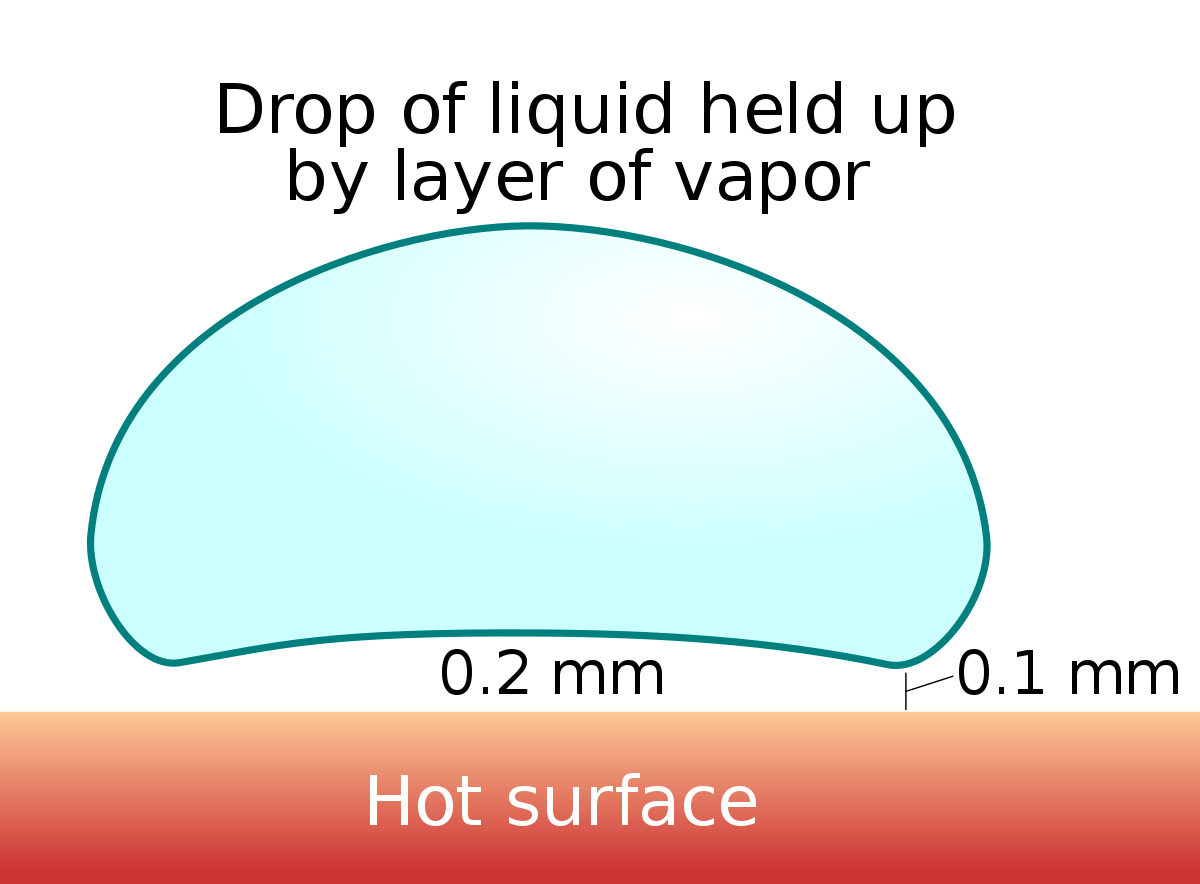Carbon steel or cast iron all the way.
Stainless steel! Neither of those is something you want to use to simmer a tomato sauce.
Why’s that? I’ve never owned any of the 3, all pans have been some form of nonstick.
Carbon steel and cast iron cookware have reactive metal surfaces that will rust if left exposed to moisture and air, especially when heated. To use these materials of cookware you need to season them which involves washing the surface clean and applying a very thin layer of oil which you then heat up to a high temperature (usually past the smoke point, but not strictly necessary).
The heating of oil in contact with the metal causes the oil molecules to polymerize and bond to the metal surface. Done properly, this gives your cast iron and carbon steel cookware a smooth, glassy, slightly brown protective polymer layer which prevents rust and helps foods release (though not as well as nonstick pans). The seasoning process can be repeated as many times as you like and it builds up more and more layers which darken over time. A well seasoned piece of cast iron or carbon steel cookware will look shiny and jet black, though this is not necessary for cooking.
The downside of these materials is that acidic or basic foods can damage the polymer layer and dissolve it right off the pan with enough heat and cooking time. Tomato sauce is a classic example of an acidic food that will eat away at the seasoning of a cast iron or carbon steel pan. A well seasoned pan can still be used to cook a tomato sauce, but not one you plan to be simmering for hours and hours (like some Sunday meat sauce like you’d see in Goodfellas).
Stainless steel (as well as enameled or porcelain coated) cookware is nonreactive so you can use it to cook acidic or basic foods no problem!
Ohh right, I didn’t think about how acidic tomatoes are. I love tomatoes, but some of the people around me get absolutely horrible stomach pains apparently.
Anyway, we make tomato based sauces at home, but never have we simmered anything for several hours like that cooking scene in Goodfellas. Should I? Would it be significantly better?
Oh you’ve got no idea how good tomato sauce can get then! It’s also great for making huge batches so you freeze most of it for later.
Hmmmm I have some bad ideas now, thanks!
deleted by creator
It depends what you’re going for. There are a lot of classic long simmered tomato sauces, they are a different thing than fast cooked ones though. Long cooked ones tend to be more mellow and complex, but lose some of the acidic zing, adding a bit of vinegar or wine at the end can bring that back though.
Just don’t make them in a cast iron, not only will the strip the seasoning, they will also absorb some iron, great if you have an iron deficiency, but it can make the sauce taste a bit metal-y.
I thought there, who on earth makes tomato sauce in a non-stick pan 😅
Nice writeup btw!
So my stainless steel/inox Lagostina pan is non reactive? What would be the benefit from having a carbon steel one (I have used cast iron a lot but it’s so heavy)?
Any community you’d recommend?
Exactly that: weight. Some people will give you other reasons why they like carbon steel but the most important is that it works like cast iron only lighter
A well seasoned carbon steel is pretty much non-stick while in a stainless you usually want some sticking to have something to deglaze for sauces.
Mine sticks enough for a nice sauce :-) !
Carbon steel is lighter but this also has less thermal mass, so it heats up and cools down faster, also tends to have less even heating.
So, searing something quickly on a preheated pan is a bit harder since the pan will cool off faster as the food leaches the heat out. Important for stuff like stir fry’s or steaks where you want short periods of intense heat for good searing at the surface but not over cooking in the interior.
I don’t want to cause a panic, but acids like tomato juice, ascorbic, citric and vinegar can attack stainless steel and dissolved chrome in the process.
But don’t think of it as extra chrome in your diet. After all, we get iron rich water from our cast iron pipes and fittings. Nah, think of it as that extra cancer you’re gonna be getting! Iron never gave you cancer, that’s a lousy metal. But chrome is pretty good!
https://theproperkitchen.com/do-stainless-steel-pans-leach-into-food/
Yes and no, apparently.
Basically go to goodwill and have a look at their used stainless pans and then compare that to what you see at the store. Its not magic material. You put some tomatoes paste or salty beans or vinegar on it and you’ll be getting some chrome dissolved on to your food. Great! Its just a little right? Wrong! What else do you see? Scratches! Every time you use a metal spoon or steel wool to grab food or clean the pan, you create brand new unreacted leachable metal chrome…pans are probably grade 18 or 316 stainless steel, so 18% of whatever shavings you made becomes happy trivalent Cr-3 ions floating around with your tasty Na and CL lol. Look at pans that got overheated or pans where you accidentally left a spoon before going on vacation for a week…they’re black where some food was left on the surface due to oxygen depletion. Stainless steel is by no means the savior. Its the magic bullet, along with plastic in the food processing business! Processed foods pass thru churning mechanisms…metal rubbing and shedding stuff on to the food.
This is why I sleep at night. I’m basically a walking FEMA disaster zone, yet, I still somehow get to my 8hr enslavement work and then back to my rest of the day 2-3 hours worth of family disfunctions just fine.
But don’t think of it as extra chrome in your diet.
Aw man…

TLDR: the tomato sauce (and other acidic fruits) reacts with the iron. Although properly seasoning (fat treating) your pan will ameliorate it, and humanity has used it for time immemorial. It does eat away some of the seasoning, leading to having to te season it, which can be annoying.
Sure, or enamelled cast iron.
I just use a aluminum pan. It doesn’t really matter if it heats evenly since you are making a liquid.
Aluminum is reactive too. But it tends to hold onto a seasoning really well!
Not necessarily. You can by pans with a polished surface.
If there is exposed aluminum, it will dissolve readily in to acidic food, polishing or not, and unlike dissolved iron which tastes off but might actually be good if you don’t get enough iron in your diet, aluminum has some toxicity to it, not a huge worry but something to be aware of.
Available at a thrift store near you, with no carbon cost!
Used cast iron is usually better than a lot of new stuff. Back in the day, it was common for the pitted surfaces to be ground smooth.
Now you can only get that with some “premium brands” that are willing to take a grinder to a pan before throwing it in the box.
SO THAT IS WHY MY FRYING PAN IS ANNOYING!
I just thought it was going to be naturally ground down over time…
Damn it, now I gotta find a thrift store.
Or you can season the shit out of it. That will also smooth out the surface. Seasoning basically makes non-stick layers on your pan using burned oil.
Preferably outdoors wipe a thin film of cooking oil on the pan and heat it up till it smokes, leaves smokey for a bit, cool down and repeat.
It’d probably be smart to read real instructions somewhere else, but that’s the jist of it.
You can still get vintage Wagner cast iron for a decent price on eBay or FB marketplace, but over the past 15 years people have started to catch on to what I just mentioned. So it’s not as dirt cheap as it once was.
These days I generally know how to cook on a pitted lodge without it sticking, but smooth cast iron is more forgiving.
The difference is what part is more forgiving
- a smooth well seasoned surface is most forgiving for your food not sticking
- a rough sandcast surface is most forgiving of poor cleaning habits. The seasoning is usually good enough and it is more likely to remain adhered
Season it with Flax seed oil. Worth the $10 for the bottle, and time.
Cooks Country came up with Flax seed oil after a lot of testing.
http://www.cooksillustrated.com/how...d=26897&frtk=u3VJqn8v17q3E4m0demcX4pjog35T4sL
Oops, that link is expired!
It starts getting better after 10 or so years when the seaaoning has built up to fill the surface roughness.
Or you sand it down to be smooth and reseason it.
Got a few inherited from my grand and great grand parents, they’re amazing and perfect. Even got a cast iron muffin tin which is great for making Yorkshire puddings.
Buying thrift store cast iron is risky, it may have been used to melt lead.
Sigh, just when I thought I found a way to get a smooth frying pan, look in my comments, I litterarly just posted here…
Why would people melt lead in a frying pan?
Most often to make their own bullets.
Ah, but why in a frying pan?
Cheap, commonly available, convenient.
Fair, but you can get a lead testing kit for around $10 USD.
Sorry if this is a dumb question, but why would you use it to melt lead?
Enameled cast iron is also great
Is this the ceramic coated ones?
Website doesn’t load
I have my browser configured to default to reader mode, and it seems readable
Safeguarding Your Website 🕵️
We’re checking if you’re a real person and not an automated bad bot. Usually, the captcha below will complete itself. If it doesn’t, simply click the checkbox in the captcha to verify. Once verified, you’ll be taken to the page you wanted to visit. Human verification is in progress ✨ Enable JavaScript and cookies to continue
If for some reason after verifying the captcha above, you are constantly being redirected to this exact same page to re-verify the captcha again, then please click on the button below to get in touch with the support team.
I guess they don’t want our traffic then.
It’s unfortunate - I thought it was a fairly comprehensive and readable overview of the differences between enamel and ceramic coated
A bit ironic that a group labeling themselves the “Cookware Sustainability Alliance” is fighting to continue making unsustainable cookware.
Both the fact that they have a voice that influences politicians more than their actual voters and that they’re allowed to call themselves that name is really a perfect representation of society.
Costly but good
Cast iron is cheap at the second hand store.
deleted by creator
deleted by creator
You really should read the rest of the article
GenX was basically told that “Teflon is inert, it can’t hurt you.”
Well fuck me.
Capitalists furious at suggestion they value human life over money
ftfy
yeah it’s a day ending in Y
I think distinctions matter
What a ridiculous world we live in. The board members should be facing prison sentences, the company’s liquidated and the money back to the people.
The money should be put into a cancer fund to pay for research and people’s medical bills from the cancer all this shit causes.
How about the suggestions that they are selling a product that should last for several lifetimes but instead lasts for 5 years if you treat it very well?
I moved to using cast iron and steel pans, I found even hand washing non-stick pans they eventually just get scuffed up after years.
I’d rather just use a few more drops of oil on a regular pan.
I’ve got a few dishes that want a non stick surface and have a dinner in a tomato sauce. I keep the non stick for those, and for house guests who don’t understand carbon steel.
I also keep a couple non-stick skillets around for guests.
However it’s incredible (in a bad way) just how ubiquitous these coatings have become. It’s going to take years to get through them all. I just got stainless cookie sheets but all my bakeware is non-stick (blind spot: I used to use a baking sheet for the broiler without connecting the dots on excessive heat vs teflon).
Next step (by frequency of use) really needs to be my rice cooker
I highly recommend picking up a Japanese induction rice cooker. We’ve had a Zojirushi for a year and even at altitude it makes perfect rice every time.
I love our zoji, but the inside is definitely non-stick. (Relevant to the conversation)
I use our instant pot pressure cooker to make rice, and it’s stainless inside.
I’m not suggesting it matches an actual Japanese rice cooker, but I think the results are pretty good.
I nixed the Zojirushi because of the PTFE coating, but I love having a non-stick rice cooker. Ended up getting a GreenPan induction rice cooker with an insert that has a ceramic coating to make it nonstick, and I love it.
That brand does have an outstanding reputation and I have considered splurging on it, however I only see non-stick pans. Whereas I can get a cheap Aroma or similar with a stainless pan.
I guess we’ll have to see how tedious it is to clean rice from stainless, but the goal is to reduce ptfe from my diet
I don’t. The flat iron skillet (comal) is nonstick enough at this point that even my kids never complain about making eggs on it, they release well. Tomato sauce does fine in stainless steel. Though I also haven’t made guests cook for themselves yet. Had one nonstick pan in the early 1990s and that was enough to sour me on them.
I make tomato sauces on both my cast iron and carbon steel. Sure, they get a bit bad afterwards, but oil+heat fixes that.
I have an enamel coated cast iron Dutch oven which does tomato dishes just fine as well.
deleted by creator
If we didn’t live in capitalist plutocracies masquerading as “democracy”, every non-stick pan ever sold would be blatant false advertising and they wouldn’t be profitable to sell anymore.
Lifetime guarantee my ass. None last more than a couple years of daily use regardless of how meticulously they’re cared for.
You’ll find that lifetime guarantee almost always means for production errors. Not wear and tear.
Just use cast iron and stainless steel. I don’t own anything else.
Don’t forget carbon steel!
And enamel cookware. It’s lasting forever.
I got some Belgium made enamel cast iron. It’s fantastic.
I hate how we allowed these ghouls to make the word “nonstick” synonymous with teflon/PFAS. It makes it sound like if you use a regular pan, you constantly have to scrape off burnt food or something. That’s just not true, a well-seasoned regular pan can be just as “nonstick” as one with a PFAS coating. It’s a fake non-problem that was invented to sell this garbage that poisons us and the environment. If it was up to me, the executives at dupont and anyone else responsible for this psyop would be sent off to labor camps (with humane working conditions of course)
Issues with food sticking to either a stainless, carbon steel, or cast iron pan, largely come down to technique and maintenance.
So if you’re going out to buy a teflon pan you’re admitting that either you’re a bad cook, or you’re lazy…. Or both.
If it was up to me, I would make it legal to ship them off to North Korea.
Is it really that bad? Sure it might be linked to cancer but so are lots of other things.
I personally just use normal cookware plus some vision stuff. All you need to do is salute some onions ahead of adding other things. The juice from the onions acts as a natural non stick.
🧅 🧅 🫡
I also want to salute my fellow onions 🫡🫡
Doing god’s work
I mean when there’s a fun little joke to be made, and I can post emoji-only rather than the usual text-only and my fellow nerds will like it, AND we’re in nottheonion which I didn’t notice until afterwards, how can I resist?
You made me laugh, have an updoot
The updoot-to-text ratio is off the charts with this comment, lol.
In reality no one can say for certain, but a lot of research is pointing to long term exposure being bad. The problem is that the research to determine how bad will take decades (and has been going on for decades at this point). Right now it’s being used as the boogeyman for every sort of ill from causing cancer, infertility, issues with lactation, liver failure, high cholesterol, thyroid disease, and auto-immune disorders. Basically the preliminary research says that it at least in part impacts all of these things, we just don’t know how much.
On the flip side bacon also causes cancer and high cholesterol at some level. That’s not to make light of the situation, but it does give some credence to your earlier statement.
The thing people are missing in these discussions is what are they willing to live without if we don’t use these chemicals. Going without non-stick cookware is literally the tip of the iceberg. How do we feel about cars, furniture, and mattresses being more flammable because they don’t have the fire retarding forever chemicals? How do we feel about stain resistance, oil resistance, water resistance, and slip resistance in everything including shoes, umbrellas, clothes, oven mitts, jackets, and more? How do we feel about needing to clean everything including clothes, appliances, and floors more often. How about in industry where it’s used as a fume suppressant so smelly chemicals don’t waft as far or fire fighting foams the next time an electric car catches on fire? This stuff is even in the wrapping of your food so the it doesn’t go through the packaging and cause a mess as easily.
Dupont coined the phrase “Better Living Through Chemistry” and that chemistry is PFAS. It’s in your clothes when you buy them, it’s in your detergent when you clean them, it’s in the cleaner that you wipe your washer off with, it’s in the floor sealant of the laundry room that washer is in, it’s in the gloves you wear while cleaning that laundry room, it’s in the carpet in the room next to the laundry room, and the list goes on and on.
Dropping PFAS chemicals fully would probably send us back to the 1960’s or we’ll end up replacing it with something just as bad that we don’t know the effects of yet.
It’s not just the use itself, but also how irresponsibly it is produced. Exposing pregnant workers to high levels, dumping it in community water supplies, on farmland etc.
Also the EU did ban them last september (effective in 2026) for essentially all of the uses you outlined, most of which I dont think are such a big deal and just minor inconveniences. It’s not like the 60s were terrible in terms of living conditions.
We also used to use asbestos for a lot of the uses you outlined and we got rid of that without too much inconvenience, but you could have made similar arguments about it back then.
And any reduction is a good thing, it’s not an all or nothing thing. DDT was banned, but can and is still used where there’s no better alternative. And just categorically saying any alternative must be just as bad is just a non-sequitur, there’s no reason that should be true. Cookware is a good example, cast iron works just as well, is not as bad, the only downside compared to teflon is weight. But it’s not like sending us back to the stone age or anything…
And just categorically saying any alternative must be just as bad is just a non-sequitur, there’s no reason that should be true. Cookware is a good example, cast iron works just as well, is not as bad, the only downside compared to teflon is weight. But it’s not like sending us back to the stone age or anything…
You can have your own opinion here, but anything which performs like PFAS compounds, in the variety of uses that PFAS is used, will almost certainly be bad. In general when you make new compounds and materials which are more complex their potential health impacts are worse. PFAS is already an extremely complex material and while broad sweeping statements might not be 100% accurate, I wouldn’t bet that it’s replacement would be better for people.
It’s another thing altogether if you are recommending going backward in the development chain, cookware is a good example here but it’s limited case underlies the ubiquity of PFAS. Hell, PFAS is a major component in computer part manufacturing and is part of the reason computing technology has progressed as it has.
How do we feel about having 8g of plastic in our brain. Each of us. https://pdfs.semanticscholar.org/cef0/fd3b2409e2ef92182d9fc42e4308d5fe1b2b.pdf
I don’t have a lot of thoughts on the matter, I know a good bit about PFAS, not microplastics. Grams vs Nanograms is a huge difference, but I don’t know if that’s detrimental or not. Looking over the link you provided the study provides it’s own description of limitations which may or may not be trivial.
It’s in the rain and every freshwater fish or lake water has it, such that even once per year fish consumption is not recommended. Safe level is 4.4ng per kg body weight/week. 300ng for adult male. Half kilo of fish will be 4800ng. Technically that is 3 fish portions per year, but you will get enough smaller amounts every day to breech limit with freshwater fish.
You have a point that it may still be needed for some stuff.
You can’t have it needed in some stuff and critically dangerous if it’s a bio-accumulating chemical that virtually never breaks down. To reduce it enough to not be a hazard world wide you would functionally have to stop using it everywhere.
I haven’t seen any definitive results on dangerous health levels, 4.4 ng/kg might be it, but then other studies show people with mg/L of blood concentration. Overall the effects of exposure seem to depend on more than just the concentration, such as health status, exposure duration, magnitude of exposure, and how lucky you got with the genetic lottery. Even then we are fairly certain it is bad, we just don’t know what or how specifically. I would also throw caution at any study using ng as a serious measurement here, especially over prolonged exposure. The problem with measuring on such a low level is that you have far too much uncertainty to claim any true accuracy, at best these studies are guessing when they throw out numbers. Hell, the EPA just came out with a standardized method for analyzing PFAS last year.
At those levels of exposure you’re probably getting it just from eating commercially grown fruits and vegetables, because it can bio-accumulate in those as well.
other studies show people with mg/L of blood concentration
4.4ng/kg per week was the result from google “safe pfas levels”. 46 weeks gets to 1 mg.
Um, no it doesn’t… maybe you’re confusing micrograms for nanograms?
Source for once per year fish consumption? I couldn’t find that.
Can’t even use a Teflon pan if you have a budgie or the fumes will kill it.
So I think it is probably quite bad.
Yes. Get as far away from that shit as you can.
It’s perfectly fine so long as none of the coating gets in your body, but given you’re making food with it, there’s a high chance it will.
If it get’s too hot it will off gas, if it gets scratched with something harder than it (like a metal spatula, or salt grains) it will flake off. So you should use plastic or wood utensils when cooking in one, and the black plastic utensils have their own issues with often being made from recycled plastics that have fire retardants mixed in, which can leach out.
You can be safe with them but it requires you be careful and deliberate with use. Personally, I think it’s easier just to use something else, even if that means taking the time to learn about how to use them well.
I never use anything but wood and plastic so it is probably fine
This article is horrible. Anyway…
Teflon has a melting point of 327°C, that can happen on a stove.
IMO It’s fine, just don’t burn your pan. Not sure about scratching it, but don’t do that either.
it seems like the primary concern of the article is the waste from producing it, not its usage
I’m not sure you need to melt it for the PFAS to leech out. There was a study recently about smart watch bands and they found that the PFAS exposure from wearing them was way above safe limits and they weren’t being heated to 327C.
Admittedly frypan coatings and watch bands are not the same materials, but still…
So, just don’t do the two things that happen to every non-stick pan ever. Gotcha.
using a pan means you have to construct that pan, in a factory that pollutes massive amount of PFAS directly into the soil and water table.
Never really had any issue with Teflon (and Teflon substitute) pans, but I’ve been impressed with the non-stickiness of my dirt cheap “ceramic” wok.
Ya know I finally got myself a cast iron pan and it works great!
The issue is that we don’t have much research on the ceramic coatings ether. They might be fine, but, there hasn’t really been enough testing to know. We might just be walking in to the same problem all over again, fluorocarbon coatings seemed fine at fist to, then they turned out to be a huge problem.
All real nonstick cookware is Teflon or chemically related to it. I almost always use cast iron or carbon steel but they are not nonstick, you have to control heat and acidity for them to release well. You can even see in nonstick pans that liquids will tend to bead up and not spread out because of the surface, versus in any other pan you’ll only see water bead up when you hit certain temps. I can only achieve something like a French omelette in a nonstick pan, carbon steel has always been a disaster, because of that me and a lot of other people keep a nonstick around just for certain egg and crepe recipes.
you’ll only see water bead up when you hit certain temps.
Basically If you FIRST heat up your stainless steel cookware to the point that when you drip some water on it, it “beads up” instead of immediately boiling away, your cookware becomes temporarily non-stick. Just don’t want to go a lot hotter than that, or you’ll do things like burn butter (unless using Ghee butter or something with a higher “smoke point”)


Wikipedia makes it sound like not all Teflon pans require PFOA, which is the actual problem here (not that the article describes it clearly).
https://en.m.wikipedia.org/wiki/Non-stick_surface
PFOA/PFOS is in lots of other household shit though, like raincoats
hashtag not all pans
Just clean your cookware people
What if my cookware isn’t people and just metal pans, do I still have to clean them?
I use Greenpan, a ceramic nonstick pan
Same! I love my Greenpans.
These non-stick pans are usually cheaper then stainless steel and cast iron, so people with lower income are more prone to buy it. Consequently, considering that low education is associated with poverty, poor people are buying more of this type of pans and not using it “properly” so getting exposed to possibly more harm and not knowing about it.
Also, " just discard the pan if flocking occurs", is everything that this industry wants: you’ll continue in an indefinitely loop of trowing away pans and buying new ones for the maximization of their profits. Thus is expected that flocking will occur more soon than ever.
deleted by creator




















